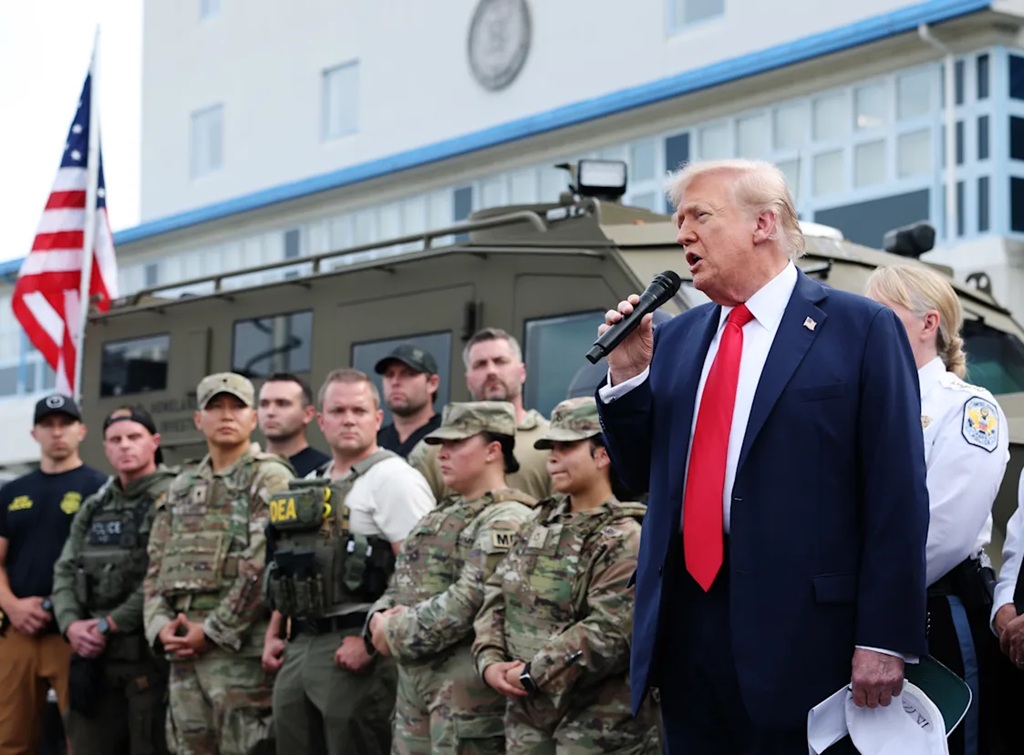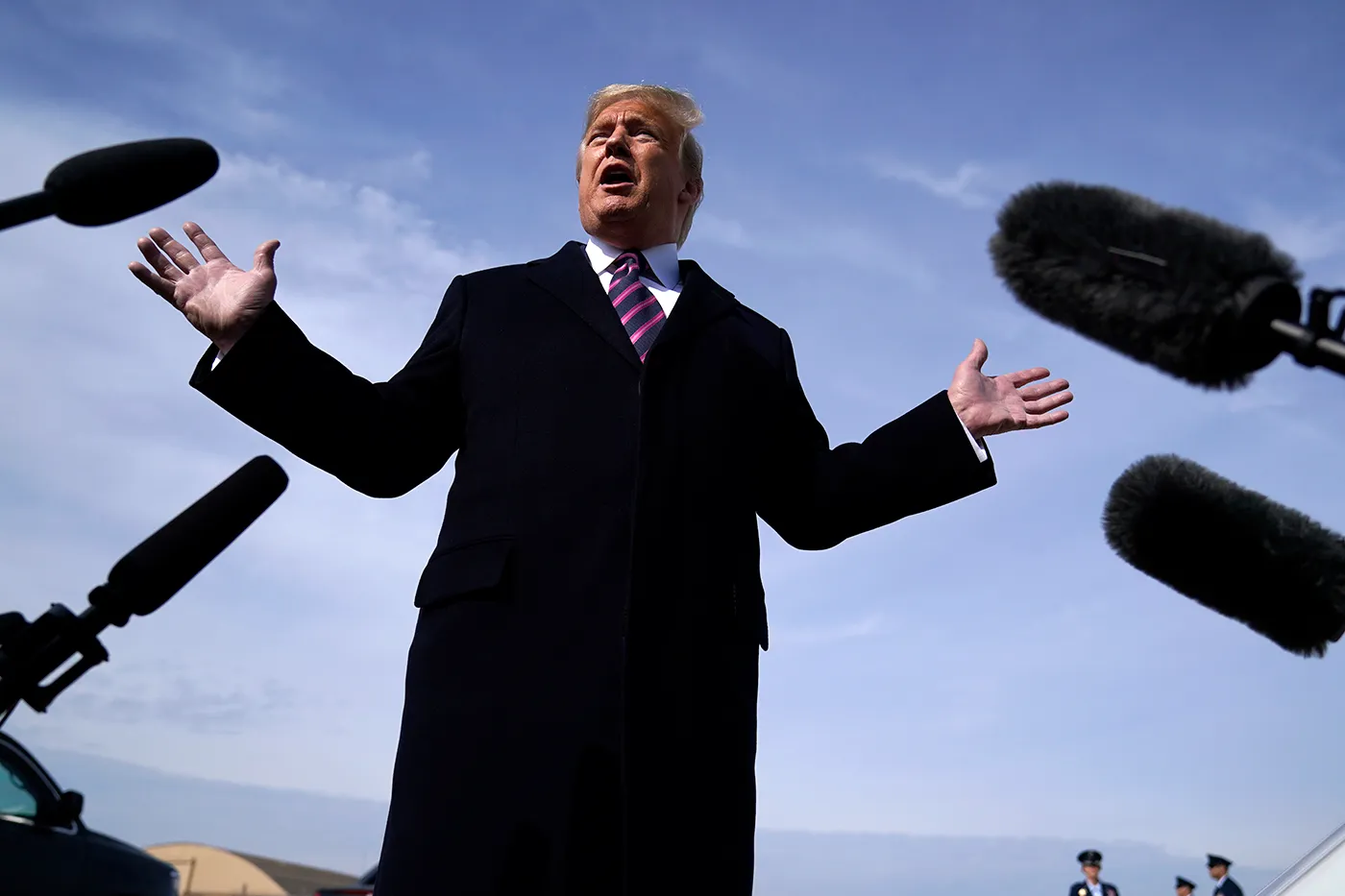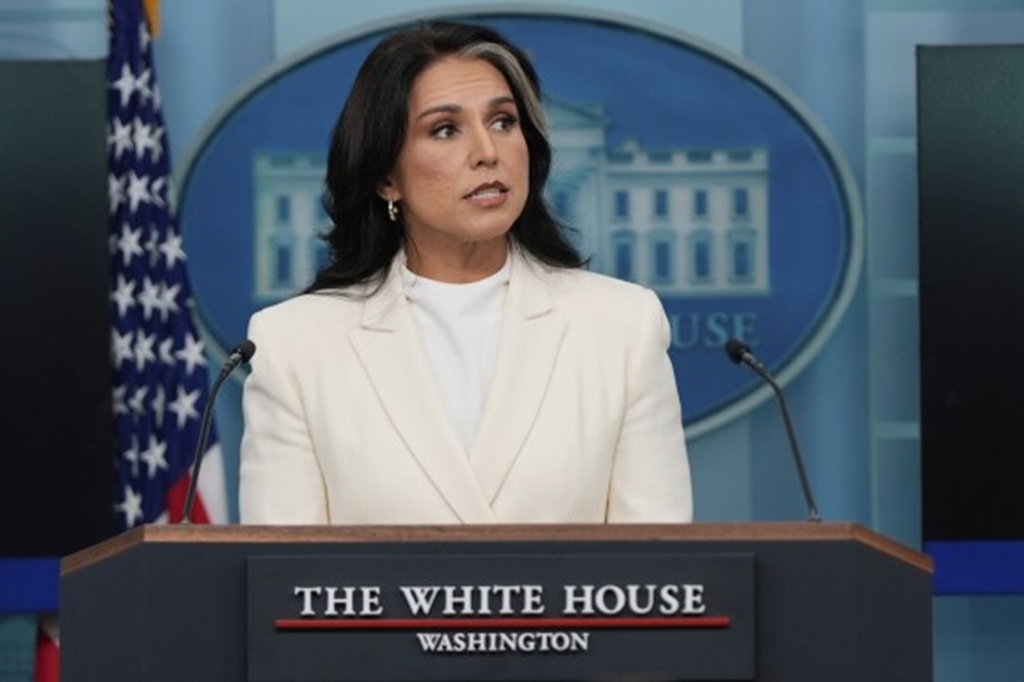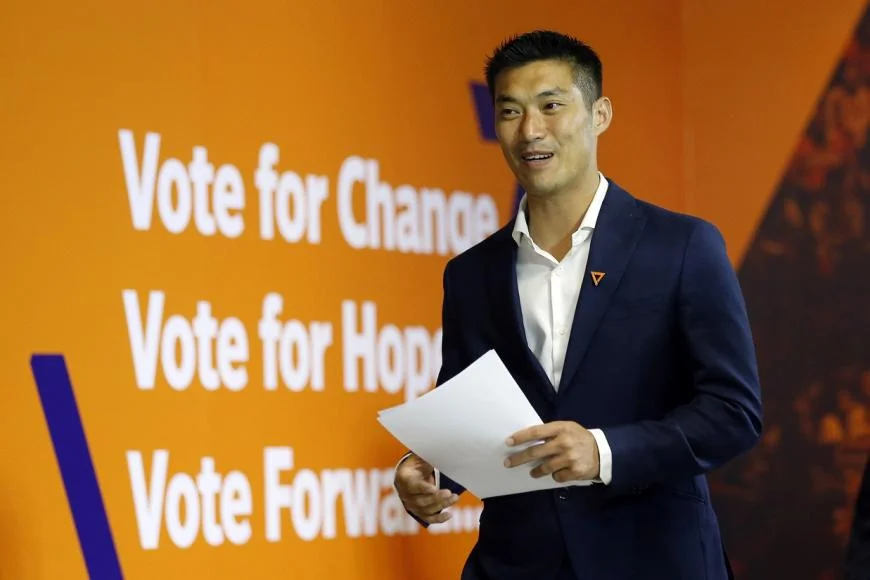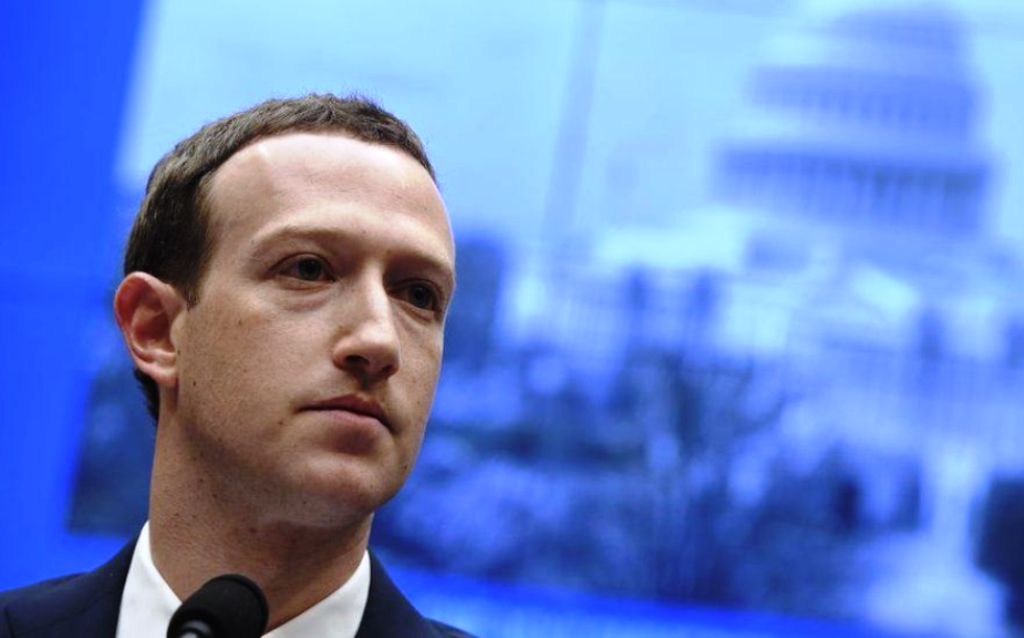Politics
Historian Victor Davis Hanson Talks on Trump’s Vision for a Safer America
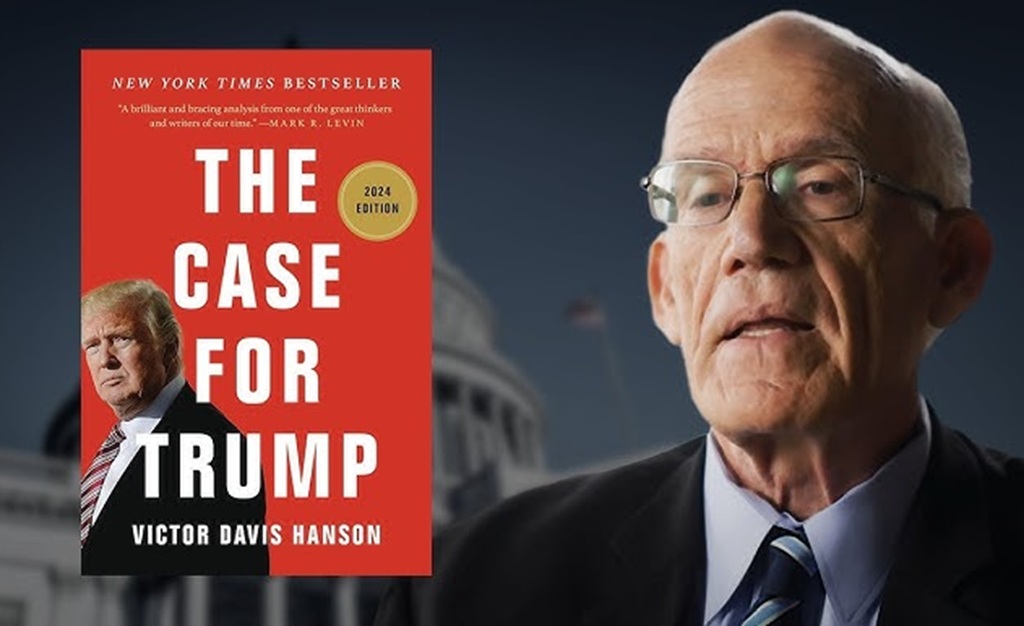
LOS ANGELES – In today’s rough-and-tumble political scene, few conservative thinkers carry as much weight as Victor Davis Hanson. A leading voice in classical and military history, he offers steady analysis in a time of noise and spin. As the Martin and Illie Anderson Senior Fellow in Classics and Military History at the Hoover Institution at Stanford, he applies a lifetime of study to current events.
Born in 1953 on his family farm in Selma, California, he shares the rural traditions he often writes about. A fifth-generation farmer, he worked full-time in orchards and vineyards from 1980 to 1984, then turned to teaching.
He earned a B.A. in classics at the University of California, Santa Cruz, in 1975, followed by a Ph.D. at Stanford in 1980. He founded the classics programme at California State University, Fresno, and later became professor emeritus there.
His awards match the scale of his scholarship. In 2007, President George W. Bush presented him with the National Humanities Medal for his work on Western thought. In 2008, he won the Bradley Prize for contributions to liberty and civic life.
Other honours include the Eric Breindel Award for Opinion Journalism (2002), the Claremont Institute’s Henry Salvatori Award (2022), and the American Spirit Award from the National World War II Museum (2021).
He has held fellowships with the National Endowment for the Humanities and the Alexander Onassis Foundation, and was named alumnus of the year by UC Santa Cruz. He has written more than two dozen books.
Victor Davis Hanson Syndicated
Key titles include The Western Way of War (1989), a major study of Greek hoplite warfare, and Carnage and Culture (2001), an account of why Western militaries have often prevailed through innovation and confidence. His essays appear in National Review, The Wall Street Journal, and The New York Times, and his syndicated columns reach a wide audience each week.
What makes Hanson a touchstone for many conservatives is his mix of historical insight and frank cultural critique. He often draws lines between ancient examples and modern dilemmas, comparing the complacency of late Rome to elite detachment in America, or reading lessons from the Peloponnesian War into recent foreign policy errors.
His appeal rests not only on learning, but on connection to place. He writes as a farmer-scholar from the Central Valley, not as a coastal insider. He backs traditional ideas like merit, free speech, and deterrence, which speak to readers weary of identity politics and expanding bureaucracy.
A Hoover Institution profile called his approach “principled realism”, a stance that some see as echoing Andrew Jackson’s spirit.
Influential figures such as Rush Limbaugh and Newt Gingrich have praised his clarity. Limbaugh hailed The Case for Trump, first published in 2019 and updated in 2024, as an ideal guide to the 45th president. In an academy that leans left, his position at Hoover gives him a central role as a classicist within modern conservatism, with reach from Capitol Hill to campaign war rooms.
Hasnons Case for Trump
Hanson’s case for Donald J. Trump is central to his recent work. He presents Trump not as a wrecking ball, but as a needed counterforce to a tired and self-protective class. In the updated The Case for Trump, he argues the 2016 result was a Jacksonian revolt, not a fluke. The outsider with no prior office overcame 16 Republican rivals and a well-funded Democratic effort by tapping the anger of the heartland.
That coalition included working-class whites, some union voters, and a fifth to a third of Latino and African American voters who felt looked down on by elites. Hanson compares Trump’s rise to ancient figures who upset entrenched circles, but he says the turbulence has purpose.
In his view, the country could not endure serial presidencies as volatile as Trump’s, yet after years of drift, it needed one outsider who would take on tasks that career politicians would avoid. He argues this posture allows Trump to uproot the stale practices of globalisation, identity sorting, and bureaucratic sprawl.
At home, Hanson frames a second Trump term, beginning in January 2025, as a counterrevolution on the scale of the New Deal, only with a restorative aim. In essays such as “Can Trump Revolutionize America?” in The Free Press (March 2025), he lists early claims of progress.
He points to tougher border policy aimed at reversing what he counts as 10 million illegal crossings under Biden, sweeping deregulation to cut federal costs by trillions over time, and tax changes that put growth ahead of deficits.
Radical Revolution
He says Trump ignores corporate pressure for cheap migrant labour, channels immigration through legal points of entry, and shifts culture from grievance to pride, a trend he links to public figures who once knelt for “systemic racism” and now celebrate wins. On trade and finance, he backs tariffs as a bid for fair-dealing with China and others, guarding American industry and shoring up the dollar’s reserve status.
In society, he targets “woke” orthodoxies. He casts universities as overpriced indoctrination centres that should lose public funds if they silence speech, and calls for procurement reforms in the armed forces to sweep away DEI rules that he believes hurt recruiting and morale. Grounded in his farming past and his study of Greek citizen-soldiers, he praises a system based on merit and duty.
He says this turn would correct the “radical revolution” of the 2020s, which he describes as an Obama third term under Biden, marked by open borders, expanding entitlements, and runaway debt. He wants a reset to constitutional standards and renewed class mobility.
On foreign affairs, Hanson argues the world grows safer when America projects toughness with restraint. He highlights what he calls Trump’s “principled realism”, or a Jacksonian do-not-tread-on-us stance that deters foes without starting new conflicts.
In The Case for Trump, he credits the first term with no major new wars, record domestic energy output that undercut OPEC, and the Abraham Accords, which he says supported a calmer Middle East.
He contends the Biden years rolled back these gains. After Trump’s 2024 win, Hanson points to swift moves he endorses, such as pausing aid to Ukraine to force a negotiated end, paired with resource deals, hitting Iran’s nuclear assets with precise strikes, and leaning on Europe to meet NATO duties in the face of Russian pressure in the Baltics.
Support Isn’t Hero Worshiping
He argues Biden’s approach rewarded bad actors, citing the Afghanistan exit, Chinese balloons, and Houthis attacks in the Red Sea. Under Trump, he says, leaders like Putin and Xi would rethink their plans. He claims tariffs crimp China’s Belt and Road push, and that Israel’s actions against Hamas and Iranian-linked sites gained from stronger US backing after 7 October.
Drawing on The Second World Wars (2017), he warns that American power is finite, so friends should find no better ally and enemies no worse foe. He believes Trump follows that rule, which in his view helps avoid long slogs like the Ukraine crisis or prolonged fighting in Gaza. In a 2025 Hoover podcast, he urges a review of the UN’s New York base, calling it a spent institution like the League of Nations, out of step with real threats.
Hanson says his support is not hero worship, but a judgment shaped by history. He casts Trump as the cure for what he describes as Barack Obama’s flawed reading of demography, where affirmative action grew into tribal politics, and for Joe Biden’s careful branding of radical measures as moderate.
He claims Trump’s knack for baiting elites exposes double standards, from antisemitism on campus to legal cases timed for effect, including those brought by Jack Smith. For conservatives, his voice draws on hard work in Selma’s vineyards and long study of wars from Marathon to the Somme. It backs a picture of America that is guarded, orderly, and fair, where strength keeps the peace and common sense replaces revolution.
He also warns of obstacles. In “Reflections on the Counter-Revolution in America” (June 2025), he argues that the left’s pushback, from lawfare and media storms to sanctuary city defiance, mirrors the zeal of French radicals. He cites early 2025 moves like cancelling clearances for Biden-era officials and cutting refugee funding as early tests of resolve.
Yet he stays upbeat. He says Trump’s base now includes many former Democrats, a sign of a broader “MAGA meritocracy” with staying power. Across his X feed and podcasts, he returns to a theme from antiquity. Great powers fall when they grow soft, but they recover when leaders confront decline.
Hanson’s staying power comes from this mix of history and straight talk. For readers tired of drift, he offers not only argument, but assurance. In his view, Trump’s revolution is not chaos; it is a last push to save the republic.
In a time of wars abroad and discord at home, he says a steadier and safer world is within reach for those who restore deterrence and demand fair play. Like a farmer turning the soil, he works to prepare the ground where hope can grow.
Related News:
Trump’s Ukraine Peace Push Met with Mainstream Media Maelstrom
Politics
Shadows Over the Ballot Box: Election Integrity Fears Rise Ahead of 2026 Midterms

WASHINGTON, D.C. – As the last balloons from the 2024 presidential election are swept away and President Donald Trump settles into his second term, old anxieties are rushing back to center stage. The memory of past election fights hangs over Washington like a storm cloud.
With the 2026 midterm election less than a year away, talk of fraud, federal pressure, and voting machine problems has grown louder, pushing policy debates on tariffs, immigration, and the economy into the background. This time, many leaders say the stakes feel almost existential, not only for control of Congress, but for public confidence in American democracy itself.
On November 3, 2026, all 435 House seats and 35 Senate seats will be on the ballot. Republicans hold a narrow 219-213 edge in the House and a more comfortable 53-47 majority in the Senate. History tilts against the party in power. Since World War II, the president’s party has lost House seats in all but two midterm elections.
Researchers at the Brookings Institution and political scientists at LSE are already warning Republicans about major losses. Some models project a net loss of up to 28 House seats for the GOP, enough to hand Democrats the gavel and choke off much of Trump’s agenda. Underneath those forecasts sits a more troubling story, a growing wave of election integrity battles that could turn 2026 into a drawn-out legal and political fight.
From Trump’s muscular use of executive power to a new surge in voter ID laws and the ongoing suspicion aimed at Dominion voting machines, many experts see the 2026 cycle becoming less about policy and more about whether the election process itself can be trusted.
“We’re heading toward an election where trust is in short supply,” says Derek Tisler, counsel at the Brennan Center for Justice. “And the current administration keeps reaching for tools that chip away at it.”
Trump’s Shadow War: Federal Muscle on State Election Systems
No single figure looms over the 2026 midterms more than Trump. His return to the Oval Office has fueled a sweeping federal push against what the White House calls election weaknesses. In March 2025, Trump signed an executive order instructing Attorney General Pam Bondi to apply “election integrity laws” with far greater force. The order included demands for detailed voter roll data from at least 19 states.
The Justice Department’s Civil Rights Division, now led by longtime Trump ally Harmeet Dhillon, has followed through with a wave of subpoenas. The department has demanded registration records from Democratic strongholds such as California and New Jersey, pointing to supposed noncitizen voting. Courts and researchers have repeatedly rejected those claims as exaggerated or false, but the investigations continue.
Critics call the effort political pressure dressed up as oversight. Maine Secretary of State Shenna Bellows, a Democrat now running for governor, says the administration is targeting those who run elections instead of protecting the people who vote.
“The federal government is going after election officials, not guarding voters,” Bellows told Politico. “We know how to run secure elections, but that works only if states stay in charge.”
Her warning mirrors a broader concern among those on the front lines. A 2025 survey from the Brennan Center reported that 59% of local election officials fear political interference. About 21% said they are unlikely to stay in their jobs through 2026 because of threats, stress, or plans to leave.
New appointees in key posts have deepened those worries. Heather Honey, a Pennsylvania activist who spread false claims of fraud after the 2020 election, is now deputy assistant secretary for election integrity at the Department of Homeland Security. Marci McCarthy, the former DeKalb County, Georgia, GOP chair who filed suit over alleged voting machine problems, now serves as a spokesperson for CISA, the cybersecurity agency once seen as a firewall against foreign election meddling.
Axios reported in June 2025 that about one-third of the U.S. cyber workforce has left federal service since Trump returned to office. That loss of talent has hollowed out defenses just as Russian and Chinese hackers probe for fresh vulnerabilities.
Trump’s decision to pardon Rudy Giuliani and other 2020 election deniers also sends a strong signal. Many analysts read it as a green light for those same figures to move into roles as poll watchers and election challengers in 2026.
In October 2025, DOJ observers appeared at special elections in California and New Jersey. Governor Gavin Newsom blasted the move as a “preview of 2026,” calling it a trial run for efforts to contest Democratic wins in newly drawn districts, including those reshaped under California’s Proposition 50.
Samantha Tarazi of the Voting Rights Lab warns that the country could face what she calls a full-scale federal effort to control the process, from overhauling citizenship databases to positioning National Guard units in precincts labeled as “disputed.” Minnesota Secretary of State Steve Simon compares the level of preparation needed for emergency planning for a major hurricane.
Supporters of the administration’s approach tell a different story. White House spokesman Harrison Fields calls the steps “commonsense safeguards” that strengthen confidence. Yet Trump’s August 2025 promise to “end mail-in ballots” through executive action, blocked so far by the courts, blurs the line between protection and suppression.
One Republican strategist, speaking anonymously to CNN, put it this way: “This is about winning, not whining, but voters might turn on us if the whole thing looks like sour grapes.”
Voter ID’s Big Moment: Security Measure or Turnout Trap?
While the federal government escalates its actions, many states are tightening voter ID rules that could shape who actually casts a ballot in 2026. By August 2025, 36 states had some form of voter ID requirement for in-person voting, up from 28 in 2020.
Since then, eight states have passed new laws: Arkansas, Idaho, Missouri, Montana, Nebraska, North Carolina, Ohio, and Wyoming. Together, those changes affect about 29 million adults. The impact will be felt especially in battleground states such as North Carolina, where a 2023 law requiring photo ID took effect in 2024.
Supporters celebrate these measures as common-sense guardrails against fraud. “Clean voter rolls and basic safeguards are key to fair elections,” Dhillon said in a statement in July 2025. Louisiana passed a 2024 law that took effect in January 2025 and now requires proof of citizenship documents to complete state registration forms, a standard that lawmakers in 47 other states echoed in bills introduced in 2025. Nebraska’s LB 514 law forces mail-in voters who lack a state ID to send in copies of photo identification, a step that can be hard for older and rural voters.
The evidence of large-scale fraud remains thin. A June 2024 Brennan Center report estimated that about 21.3 million eligible voters, or 9%, lack easy access to citizenship documents. The study found that these burdens fall more heavily on voters of color and low-income communities.
Scholars at Harvard calculated that the cost of gathering the paperwork often exceeds $12 per person, roughly the same as the poll tax banned by the 24th Amendment and civil rights laws in the 1960s.
At the same time, recent elections complicate the narrative. In 2024, Kamala Harris carried six states that require voter ID, undercutting blanket claims that such laws always favor Republicans. Reuters fact checks have pointed out that ID rules can cut both ways, depending on how they are written and enforced.
Looking ahead to 2026, the federal SAVE Act hangs in the background. The House passed the bill in July 2024, but it stalled in the Senate. The proposal would require Real ID-level proof of citizenship for voter registration in federal elections. With Trump’s Justice Department carrying out its own citizenship checks and investigations, Democrats warn of what Tarazi calls a “death by a thousand cuts” approach that slowly narrows the electorate.
Mindy Romero of USC says the impact of these laws goes beyond who has an ID card. She points to longer lines at polling places, more provisional ballots that may not be counted, and lower turnout in busy urban precincts. Even small shifts in participation could decide tight races, from a Pennsylvania Senate contest to close House districts in Virginia.
Yet not all the data cuts against these laws. In North Carolina, the photo ID requirement survived court challenges and now appears to have boosted Republican votes in lower-turnout elections, according to figures compiled by NCSL. And with about 98% of votes in 2024 backed by paper records, proponents say ID rules paired with audits can strengthen confidence among skeptical voters.
Dominion’s Ghost: Machines, Myths, and a High-Profile Makeover
No brand name in voting technology stirs more emotion than Dominion Voting Systems. The company, founded in Canada, provided machines in 27 states in 2024 and counted billions of ballots without any confirmed evidence of fraud. Even so, false claims from 2020 that Dominion machines “flipped” votes from Trump to Biden have lived on in political circles and online.
Those conspiracy theories carried a real price. In 2023, Fox News agreed to pay Dominion $787 million to settle a defamation suit over false statements about the company. Newsmax followed in August 2025, settling for $67 million.
The story took a new turn in October 2025, when Dominion was sold to Liberty Vote, a company led by former Missouri Republican official Scott Leiendecker of KnowInk. Liberty has promised a “top-to-bottom review” of existing equipment and pledged to “rebuild or retire” any hardware seen as vulnerable before the midterms.
In Colorado, where Dominion is headquartered and serves 60 counties, several local officials welcomed the change. Boulder County Clerk Molly Fitzpatrick called the sale an opportunity to reset public perception. “These are the same machines, but people may feel different with a new company name,” she said.
Doubts remain strong in other places. Georgia has continued to use Dominion machines that have not received full software updates since 2023, when researcher J. Alex Halderman showed in court filings how someone with access could alter votes using tools as simple as a USB drive. Secretary of State Brad Raffensperger has dismissed those scenarios as “theoretical,” but the real-world breach in Coffee County in 2021, where Trump allies gained unauthorized access to voting systems, showed that physical security can fail.
Michigan had its own headache in October 2024. A glitch with the VAT system there forced voters who chose a straight-party ticket to manually re-select certain candidates. The issue did not alter vote totals, but the confusing experience fueled viral rumors of “vote switching,” even after officials explained that the problem involved the ballot interface, not the count.
Elon Musk and a wave of MAGA-aligned influencers intensified those worries on X, calling for state officials to ditch Dominion and similar systems outright. They pushed those demands even though about 98% of ballots now generate a paper record that independent audits can review. In Puerto Rico, reports of machine problems sparked a formal review of contracts with voting vendors.
For 2026, Liberty Vote’s leadership and Republican roots create a complicated picture. Some conservatives say it helps them trust the machines more. Many Democrats argue the opposite and see the sale as a partisan takeover. As one NPR analysis put it, marketing changes cannot erase conspiracy theories when layers of audits have already confirmed accurate results.
Midterm Outlook: House on a Knife Edge, Senate Less Likely to Flip
Early forecasts lean toward a Democratic gain. A November 2025 YouGov poll gave Democrats a 46% to 40% lead on the generic House ballot, with 41% of respondents saying they expect Democrats to win a House majority. Economic models published by The Conversation project that slowing growth, which many voters blame on Republican policy, could cost the GOP about 28 House seats.
Political scientists Tien and Lewis-Beck at LSE reach similar conclusions. Their work ties expected Republican losses to Trump’s job approval numbers, which have dipped below 45% in most national surveys.
The Senate map looks more stubborn. Democrats defend seats in Maine and North Carolina, while Republicans are on defense in Iowa and Texas. Even a strong Democratic wave might only be enough to shift a seat or two. Simulations from Race to the WH suggest Democrats could flip the House with three or four tight wins, while the Senate likely ends in a narrow split, with either party holding a slim edge.
Plenty of wildcards could scramble these predictions. Government shutdowns, new abortion battles, or a foreign crisis could change turnout patterns and voter mood in a hurry. Redistricting lawsuits in states such as Texas and Ohio, flagged by Brookings analysts, may alter the map yet again. Trump’s comments about using the military at the border and in domestic protests hang in the background as well.
Protecting the Vote: A Shared Responsibility, Whether Washington Acts or Not
Election threats now come from many directions, from bomb threats to deepfake videos to organized harassment of poll workers. Some states have not waited for Washington to act. Colorado has made risk-limiting audits standard practice, following a model laid out in a joint Brennan Center and R Street report. These audits check a sample of ballots against machine counts to confirm accuracy.
The Election Assistance Commission’s budget for fiscal year 2026 shifts more money toward transparency tools and public-facing information, though it does not include new, large grants to states. Advocates across party lines say that is not enough.
Former Philadelphia City Commissioner Al Schmidt, a Republican, has pushed for more consistent funding and training. “If officials put in the work now, they avoid disaster later,” he says. “Waiting until something breaks is a bad plan.”
With Trump’s political machine in full swing and partisan suspicion running hot, the 2026 midterms will test how much stress the system can handle. The country heard nonstop claims in 2020 that it had just held the “most secure election” in history. The coming cycle will show whether that level of confidence can hold, or whether new fights over rules, machines, and federal power break it apart again.
As Tisler puts it, “Voters will forgive leaders who prepare. They won’t forgive leaders who freeze.” In a capital already bracing for the next storm, that may be the only outcome both parties truly fear.
Related News:
Far Left Socialist Democrats Have Taken Control of the Entire Party
Politics
GOP Need More Fiscal Responsibility in Government Spending
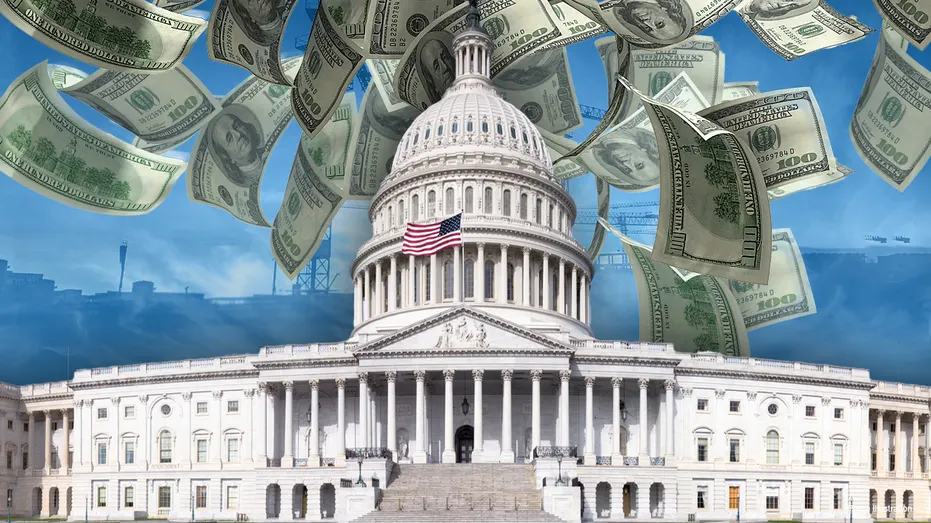
The numbers in 2025 are hard to ignore. The U.S. national debt is around $38 trillion, larger than the whole American economy. The debt is about 119 percent of GDP, and the yearly deficit is about $1.8 trillion.
Interest on that debt is close to $1 trillion a year, which is now bigger than defense spending. That means more tax dollars go to past borrowing instead of current needs like security, health, or roads.
This is not just a Washington problem. It affects families, jobs, mortgage rates, and the future tax bill for kids and grandkids. Republicans often talk about fiscal responsibility, but in 2025, the math is calling their bluff. Voters want more than slogans about Government Spending. They want a real plan.
This post walks through 10 practical steps the GOP could push to move from talk to action, without scare tactics or fantasy cuts.
What Fiscal Responsibility In Government Spending Really Means In 2025
Fiscal responsibility is simple to describe, even if it is hard to do. It means living within our means over time, setting clear priorities, and being honest about what things cost.
The federal government is now spending about $1.8 trillion more than it brings in each year. That yearly gap is the deficit. The total pile of all past deficits is the national debt. As rates have risen, the interest on that debt has exploded.
Money that could support schools, roads, or tax relief now goes to interest payments instead. Every year that we leave the problem alone, the interest bill gets heavier and squeezes everything else.
Both parties helped create this mess. Big tax cuts without offsets, large new programs, and emergency bills all added up. But the GOP brands itself as the party of fiscal restraint, so the pressure in 2025 is higher on Republicans to show real numbers that line up with their words. For a look at how the official budget itself is built, the White House publishes the full Fiscal Year 2025 federal budget.
Deficit, Debt, And Interest: The Budget Basics In Plain English
Think of a family budget. If your household earns $5,000 in a month but spends $5,500, that extra $500 is your deficit. If you keep doing that, the unpaid bills add up on a credit card. That full balance is your debt.
Now add interest. If the card rate is high, the bank charges a big fee each month just to carry the debt. The more you owe, the more interest you pay, and the harder it is to dig out.
The federal government works the same way, just with bigger numbers. When Congress runs a deficit, it borrows by selling Treasury bonds. Lenders get interest. As debt rises and rates stay higher, interest costs soar. That leaves less room for anything else without higher taxes or more borrowing.
Why Government Spending And Debt Have Become A 2025 Crisis Point
In 2025, interest costs are higher than the defense budget. For any party that calls itself conservative, that should set off alarms.
Several long-term trends feed this:
- An aging population that raises Social Security and Medicare costs
- Health care that grows faster than the rest of the economy
- Past choices to cut taxes and raise spending at the same time
If nothing changes, debt keeps growing faster than the economy. That raises the risk of higher future taxes, lower growth, and painful cuts later. A steady, step-by-step plan is the only way out.
The GOP’s 2025 Wake-Up Call: Why Words On Government Spending Are No Longer Enough
Republicans have long promised to cut waste, shrink Washington, and balance the budget. Yet deficits have grown under both parties, and debt has kept rising even during good economic years.
Many GOP budgets on paper have aimed for balance, but they often leaned on rosy growth forecasts, deep cuts that never passed, or one-time savings. Meanwhile, tax cuts, strong defense spending, and protection for major programs all stayed in place.
Voters now see the gap between the talk and the results. In 2025, with interest beating defense and shutdown fights fresh in memory, the party has a chance to reset its brand around real fiscal responsibility. The House Budget Committee’s own FY 2025 Budget Resolution blueprint shows how Republicans are trying to put their ideas into formal plans, even if not everyone agrees on the details.
How Past Promises On Debt And Deficits Fell Short
Over the last few decades, GOP leaders pledged to:
- Balance the budget in a few short years
- Cut “waste, fraud, and abuse.”
- Protect seniors and the military
At the same time, they supported tax cuts, opposed many trims to large programs, and backed new spending in areas they favored. Democrats also passed bills that increased the debt, but they have not built their brand on fiscal restraint the way Republicans have.
When the numbers did not add up, trust took a hit. To repair that trust, the GOP needs a plan that matches its promises with clear trade-offs.
Why Voters Want Real Plans, Not Just Talk About Government Spending
Voters are feeling the cost of debt in daily life. Higher interest rates mean more expensive mortgages, car loans, and credit card bills. People worry that future taxes on their kids will climb to cover today’s choices.
Many Americans like lower taxes and strong benefits at the same time. In 2025, more of them are asking a simple question: “Who pays, and when?”
Clear, honest GOP leadership on Government Spending could reach beyond the party base. Voters respond when leaders show their math, admit trade-offs, and protect both growth and basic fairness.
10 Practical Steps To True Fiscal Responsibility In Government Spending
Here are 10 realistic steps the GOP could push to move from slogans to substance.
Step 1: Set A Realistic Multi-Year Plan To Slow Government Spending Growth
Stop promising an instant balanced budget. Instead, set a 5 to 10-year path that slows spending growth each year. Clear, public targets calm markets and give families time to adjust.
Step 2: Make A Hard, Public List Of Spending Priorities And Non‑Negotiables
List what must be protected, such as core Social Security checks for current seniors, basic defense, and key safety net programs. Then name what can be trimmed, delayed, or ended. Serious budgeting means not everything can be off limits.
Step 3: Reform Entitlements To Save Them, Not Just Cut Around The Edges
Social Security and Medicare will drive most future Government Spending growth. Reforms could include:
- Gradually raising the retirement age for younger workers
- Reducing benefits for high-income retirees
- Tightening Medicare payments where waste is clear
These steps protect current seniors while keeping programs alive for younger generations.
Step 4: Take Defense Spending From Sacred Cow To Smart, Efficient Power
A strong military is important, but not every program is. The GOP could support:
- Deep audits of large weapons projects
- Closing unneeded bases
- Shifting funds to cyber, drones, and other modern threats
That means peace through strength and smart spending, not blind growth.
Step 5: End One-Time Gimmicks And Off-Budget Tricks That Hide Real Costs
Too often, Congress uses “emergency” labels for routine costs or moves items off budget to make deficits look smaller. Republicans could demand:
- Strict rules for what counts as an emergency
- Honest 10-year cost estimates for every major bill
- Easy-to-read public reports that match those rules
Clean numbers rebuild trust.
Step 6: Target Waste, Fraud, And Duplication With Real Teeth, Not Just Hearings
Hearings alone do not fix waste. The GOP could back:
- Stronger inspectors general with real independence
- Rewards for whistleblowers who uncover big fraud
- Automatic shutdown of programs that fail audits repeatedly
Examples include overlapping job training programs and improper payments in health care.
Step 7: Tie New Government Spending And Tax Cuts To Clear, Paid-For Plans
Adopt a simple rule: if you want a new program, benefit, or tax cut, you must show how to pay for it. This “pay as you go” idea means real offsets, not wishful growth. It would slow the habit of putting today’s promises on tomorrow’s credit card.
Step 8: Grow The Economy With Pro‑Growth Reforms, Not Pure Borrowing
Growth makes debt easier to handle, but only if borrowing is under control. The GOP could focus on:
- Simpler, more stable tax rules
- Smarter regulation that helps small businesses compete
- Strong work incentives for people on the edge of the labor force
Tax cuts funded by more debt only push the bill into the future.
Step 9: Protect The Most Vulnerable While Cutting Low-Value Government Spending
A responsible budget should not lean on the poorest or disabled to fix the math. Better data can help target aid to those who truly need it, while trimming subsidies and tax breaks that mostly help big corporations or wealthy groups. That approach fits conservative values and basic fairness.
Step 10: Create A Bipartisan Fiscal Commission With Binding Targets
A modern fiscal commission could give both parties cover for tough choices. Members from each side would set shared debt and deficit goals, then send one package to Congress for an up-or-down vote. No easy amendments, no watering down. Sharing the political risk makes long-term reform more likely.
How Voters, Lawmakers, And The GOP Base Can Push For Real Change
Policy ideas only matter if people push for them.
- Voters can ask better questions at town halls and reward honesty even when the answers are hard.
- Grassroots conservatives can support candidates who show their math, not just their anger.
- Republican lawmakers can
Related News:
Far Left Socialist Democrats Have Taken Control of the Entire Party
Politics
South Asian Regional Significance of Indian PM Modi’s Bhutan Visit

India’s Prime Minister Narendra Modi’s visit to Bhutan from November 11-12 comes at a delicate moment for South Asia, a region navigating economic pressures, domestic political transitions, and the strategic uncertainty brought by shifting major-power relations.
While India and Bhutan share a long-standing partnership rooted in trust, development cooperation, and geographic proximity, Modi’s trip carries broader implications for how New Delhi seeks to engage the region and what kind of stability it hopes to cultivate.
In many respects, this visit signals continuity rather than change—it reflects India’s long-term priorities in maintaining peaceful frontiers and mutually beneficial relations with its neighbors, while acknowledging that South Asia today is no longer the same as it was a decade ago.
Reaffirming a Foundational Partnership With Bhutan
India and Bhutan have nurtured one of South Asia’s most resilient and least contentious bilateral relationships. The partnership is defined by shared cultural ties, geographic interdependence, and decades of development cooperation. Modi’s visit, therefore, is a reaffirmation rather than a recalibration. It signals that India sees Bhutan as a key partner in maintaining a stable Himalayan region.
For Bhutan, the visit underscores continuity in its careful diplomacy—seeking economic advancement and diversified external engagement while preserving strong relations with India. Bhutan’s foreign policy is rooted in a pragmatic balance: maintaining deep ties with India while gradually exploring avenues for broader international outreach, including dialogue with China. Modi’s visit respects this balanced approach.
A Message of Stability Amid Regional Change
South Asia today is more fluid and fragmented than in previous decades. Sri Lanka is recovering from an economic crisis. Nepal experiences frequent political turnover. The Maldives is adjusting to new strategic preferences. Bangladesh faces domestic and external pressures. Pakistan remains economically and politically fragile.
In such a landscape, India’s visit to Bhutan sends a message emphasizing stability and predictability. Rather than attempting to expand influence through dramatic initiatives, Modi’s approach emphasizes steady engagement through infrastructure, energy cooperation, connectivity, and people-to-people exchange.
South Asian states, large and small, increasingly prefer partnerships that support domestic development and regional peace rather than geopolitical rivalry. India appears to acknowledge this reality by focusing on practical cooperation.
Himalayan Security Without Confrontational Signaling
The Himalayan region remains sensitive for India, Bhutan, and China alike. Bhutan’s ongoing boundary discussions with China have been closely observed across the region, not only for their implications on territorial questions but also for what they signify about evolving regional diplomacy. Bhutan aims for a peaceful resolution of its boundary issues and seeks to handle both India and China with sensitivity and independence.
Modi’s visit, in this sense, does not attempt to counter or overshadow Bhutan’s engagement with China. Instead, it affirms India’s willingness to maintain open communication and mutual respect regarding Bhutan’s sovereign choices. At the same time, the visit quietly reinforces India’s interest in preserving stable Himalayan frontiers—a goal broadly shared by all countries in the region.
This balanced approach benefits all sides. It avoids escalatory rhetoric, supports Bhutan’s diplomatic autonomy, and aligns with a wider South Asian desire to keep the Himalayan region free from tensions.
Development Cooperation as a Regional Stabilizer
A major foundation of India–Bhutan ties is development partnership, particularly in the hydropower sector. Bhutan exports clean energy to India, which helps underpin Bhutan’s economy and supports India’s push for renewable energy. This model of cooperation—predictable, mutually beneficial, and environmentally sustainable—has long been viewed as a positive example for the region.
Modi’s visit highlights India’s intention to continue supporting Bhutan’s socio-economic priorities: hydropower projects, digital and financial connectivity, transport links, and investment in education and human capital.
Crucially, this developmental approach carries a broader message to South Asia: cooperation grounded in long-term sustainability can help create regional resilience in an era of global economic volatility. Many regional governments, regardless of their political orientation, are prioritizing economic recovery and infrastructure development. India’s engagement with Bhutan reflects an attempt to align its neighborhood diplomacy with these shared priorities.
Room for Multiple Partnerships in South Asia
One of the most important shifts in recent years is the way smaller South Asian states are pursuing broader external engagement. China’s presence in the region has grown, offering investment, connectivity, and diplomatic outreach. The United States, the EU, Japan, and Gulf countries have also expanded their economic and strategic footprints.
Modi’s visit implicitly accepts that South Asia today is not a region of exclusive alignments but of overlapping partnerships. Rather than challenging Bhutan’s evolving diplomatic interests, India appears to be focusing on reinforcing trust, connectivity, and people-centered ties.
This balanced stance reduces the risk of regional polarization and demonstrates India’s willingness to adapt to a more pluralistic South Asian environment. For the region as a whole, the message is constructive: multiple partnerships can coexist if they support development, preserve sovereignty, and promote stability.
India’s Vision for Regional Cooperation
India’s approach to regional cooperation has broadened in recent years. With SAARC largely inactive and BIMSTEC still developing, India increasingly relies on flexible, bilateral frameworks to achieve practical outcomes. Modi’s trip embodies this strategy: targeted cooperation with neighbors, designed to meet specific needs rather than large-scale regional blueprints.
Still, the visit also reflects India’s interest in maintaining a peaceful and cooperative South Asia as the foundation of its broader global ambitions. A stable neighborhood frees diplomatic bandwidth, supports economic integration, and reduces security risks.
Modi’s engagement with Bhutan illustrates three priorities India seeks in its periphery: Predictable and peaceful borders, especially in the Himalayas. Collaborative economic partnerships that support development on both sides. Balanced diplomacy that avoids forcing neighbors into binary choices. These principles resonate across South Asia, where governments increasingly emphasize sovereignty, balanced diplomacy, and inclusive development.
A Constructive Regional Signal
Beyond India–Bhutan relations, the visit conveys a wider message to South Asia: cooperation grounded in respect, development, and stability remains essential in an uncertain global environment. As the region evolves, India appears to recognize the importance of maintaining strong partnerships without pressuring smaller neighbors or escalating strategic competition.
Bhutan’s careful balancing, India’s steady engagement, and China’s interest in peaceful dialogue together create space for a more stable Himalayan region. If all parties continue to emphasize cooperation and mutual respect, South Asia can move toward a more predictable and inclusive future.
Modi’s visit to Bhutan is neither a dramatic pivot nor a strategic confrontation. It is a reaffirmation of a durable partnership—one that reflects the broader aspirations of South Asia for peace, development, and balanced diplomacy.
In a region experiencing rapid change, such a predictable and respectful engagement offers a constructive model. For South Asia, the deeper message is clear: stability and cooperation, not rivalry, should guide the future.
Related News:
7 Countries Offering Visa-on-Arrival for Indians
-

 News2 months ago
News2 months agoPeace Prize Awared to Venezuela’s María Corina Machado
-

 Politics2 months ago
Politics2 months agoFar Left Socialist Democrats Have Taken Control of the Entire Party
-
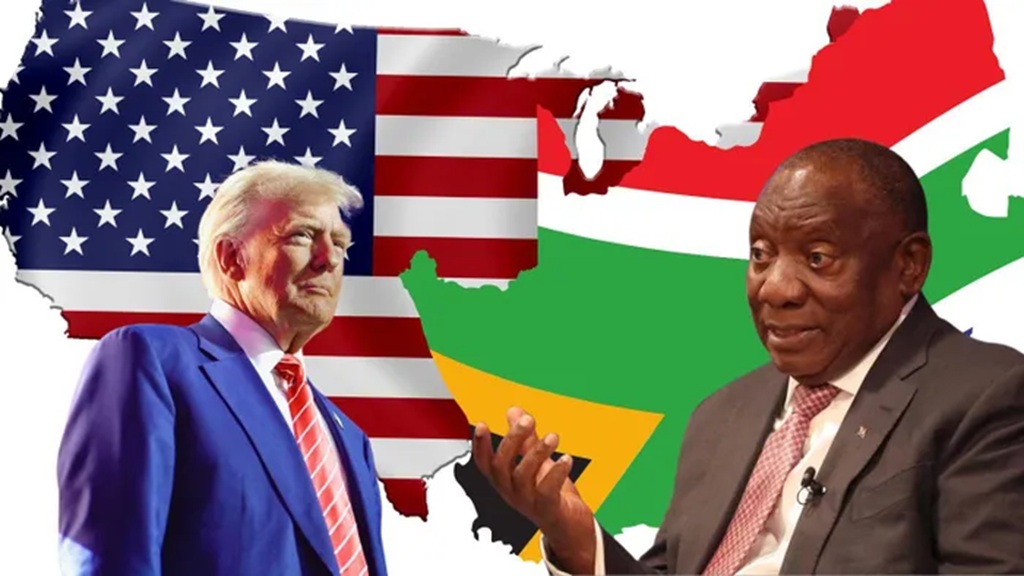
 News2 months ago
News2 months agoSouth Africa’s Audacious Bid to Teach America a Lesson
-

 Politics2 months ago
Politics2 months agoThe Democratic Party’s Leadership Vacuum Fuels Chaos and Exodus
-

 Politics2 months ago
Politics2 months agoDemocrats Fascist and Nazi Rhetoric Just Isn’t Resognating With Voters
-

 Politics2 months ago
Politics2 months agoChicago’s Mayor Puts Partisan Poison Over People’s Safety as Trump Troops Roll In
-

 News2 months ago
News2 months agoThe Radical Left’s Courtship of Islam is a Road to Self-Defeat
-

 Crime1 month ago
Crime1 month agoAntifa Accused of Using Homeless Elderly as Human Shield Agianst Federal Agents

